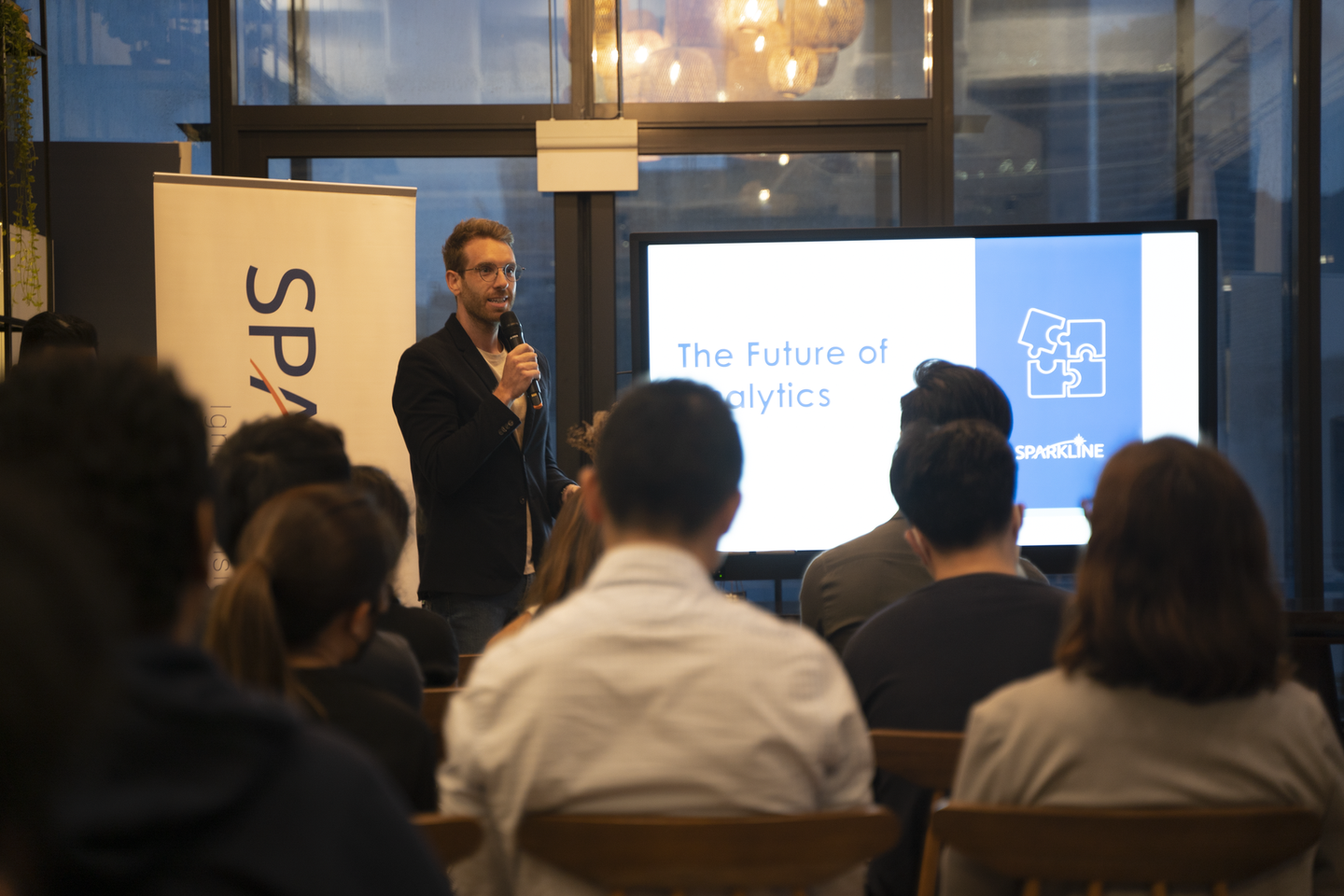Marketers require new analytics tools to comprehend the customer journey and enhance user experiences across several touch points including websites, email marketing, social media and more as consumer behavior and user expectations change. Sparkline teamed up with the Hive Carpenter, Singapore for their first in-person event of the year. The event went over the future of digital analytics and was presented by the brilliant Natesh Elansezhiyan of Sparkline and Alex Oakden of Google.

Digital analytics analyses digital data from sources like websites or mobile devices. It gives excellent insight to the organization on how users behave, and can help companies learn where they need to improve. One fascinating example of how digital analytics can be used, mentioned in an article by Will Hillier, is seen at Tesla. Each one of their vehicles is equipped with neural net software that processes vision, sonar, and radar data. This data is then used to perfect the autonomous driving process in preparation for a future with driverless cars.
Natesh Elansezhiyan and Alex Oakden’s presentation centered around the idea of change, and just like Tesla, preparation for the future. The current state of data analytics comes with a variety of challenges that brands have to face daily, but with the onset of Google Analytics 4, many of those wrinkles are being ironed out.

Several of the major challenges which brands face with the current state of digital analytics are internal struggles. Alex brought up some of the most common pain points for brands and the industry when utilizing digital analytics:
- Brands
- 40% of brands rely on the expertise of an individual employee
- 70% find it challenging to integrate data
- 60% of marketers say insights are too slow
- 68% of marketers say insights are not actionable enough
- Industry
- Rising user expectations on privacy
- Phasing out of third-party cookies on Chrome

One of the most notable challenges mentioned was the phasing out of third party cookies on Google Chrome. Web browsers like Safari and Firefox already don't allow the use of these cookies, but with Chrome being the most used browser, this shift is having a much bigger impact. Many companies rely on third-party cookies for a lot of their marketing efforts and “44% of marketers predict a need to increase their spending by 5% to 25% to meet the same goals as 2021” (Bump). Third-party cookies allow advertisers to learn which websites a user frequents and what interests they may have. This permitted for much more targeted advertisements which were found to be very effective. The reason that these cookies are being phased out is because of an increased expectation of privacy when online. The internet is beginning to be more regulated, and in preparation for third-party cookies being banned, browsers are phasing them out now.
This is where Google Analytics 4 comes in; not utilizing any third-party cookies. It offers the solutions needed to replace the use of third-party cookies and makes workflow more efficient. Google Analytics 4 can collect and measure data, analyze data for user insights, and integrate your data to get a holistic view across devices and platforms. This is especially important as technology becomes more pertinent and users use many devices.

From this, we can glean that improving the use of analytics is a top priority to ensure businesses meet evolving measurement and market needs and improve overall marketing outcomes. The future of digital analytics is now, and the utilization of Google Analytics 4 is the best way to prepare.
/assets/images/2107567/original/bcaed015-50c4-4667-83b7-5a99c6426e4c?1522733374)


/assets/images/2107567/original/bcaed015-50c4-4667-83b7-5a99c6426e4c?1522733374)




/assets/images/2107567/original/bcaed015-50c4-4667-83b7-5a99c6426e4c?1522733374)
